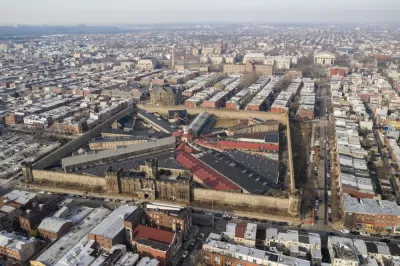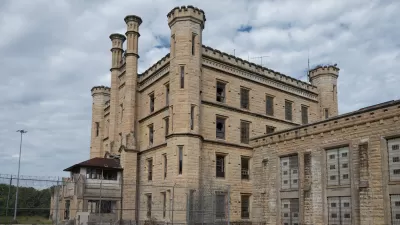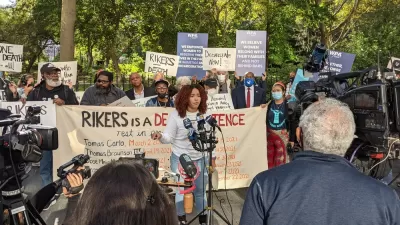Advocates in the design industries have been pushing for years for the American Institute of Architects to take a stance on how prisons are designed.

Jonathan Hilburg reports that the national branch of the American Institute of Architects (AIA) has updated its code of ethics to "prohibit the design of spaces intended for execution, torture and prolonged solitary confinement," adopting the change on December 10.
"Interestingly enough, the AIA has framed the decision as one not just of social justice but of specifically addressing racism in the built environment, acknowledging the disproportionate rates that minorities in America are subject to these spaces," explains Hilburg.
The source article includes more insight into the details of the AIA's new stance on prison reform, which has grown out of the public response to the murder of George Floyd and the Black Lives Matter protests that have continued around the country throughout the year.
FULL STORY: The AIA updates its code of ethics, prohibits members from designing torture or execution chambers

Montreal Mall to Become 6,000 Housing Units
Place Versailles will be transformed into a mixed-use complex over the next 25 years.

Planetizen Federal Action Tracker
A weekly monitor of how Trump’s orders and actions are impacting planners and planning in America.

DARTSpace Platform Streamlines Dallas TOD Application Process
The Dallas transit agency hopes a shorter permitting timeline will boost transit-oriented development around rail stations.

Interactive Map Reveals America's “Shade Deserts”
Launched by UCLA and American Forests to combat heat-related deaths, the tool maps the shade infrastructure for over 360 U.S. cities.

Bicycles and Books — In Sacramento, Libraries Now Offer Both
Adult library card holders can check out e-bikes and e-trikes for up to one week.

Colorado Landfills Emit as Much Pollution as 1M Cars
Landfills are the third-largest source of methane pollution in Colorado, after agriculture and fossil fuel extraction.
Urban Design for Planners 1: Software Tools
This six-course series explores essential urban design concepts using open source software and equips planners with the tools they need to participate fully in the urban design process.
Planning for Universal Design
Learn the tools for implementing Universal Design in planning regulations.
City of Mt Shasta
City of Camden Redevelopment Agency
City of Astoria
Transportation Research & Education Center (TREC) at Portland State University
US High Speed Rail Association
City of Camden Redevelopment Agency
Municipality of Princeton (NJ)





























